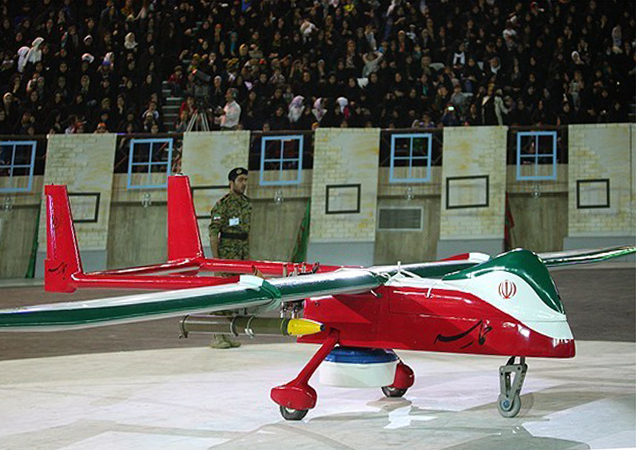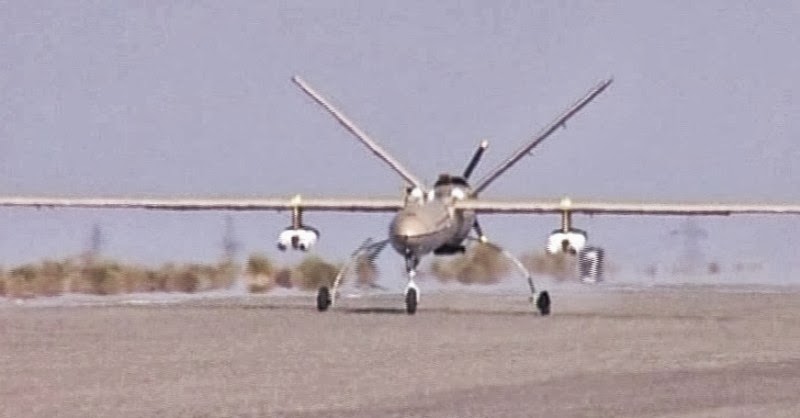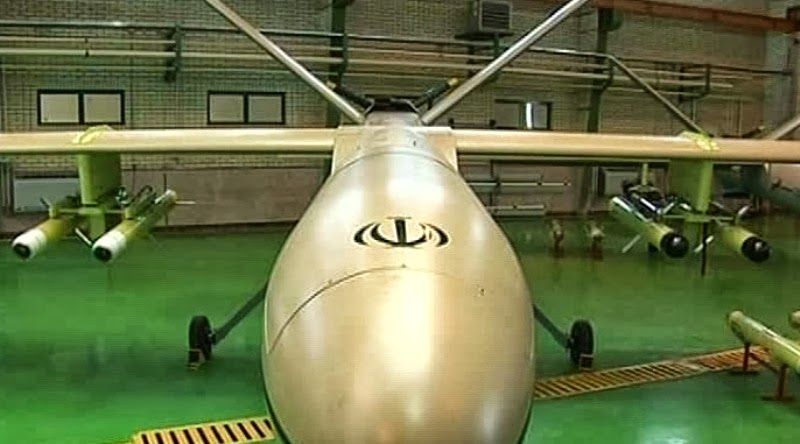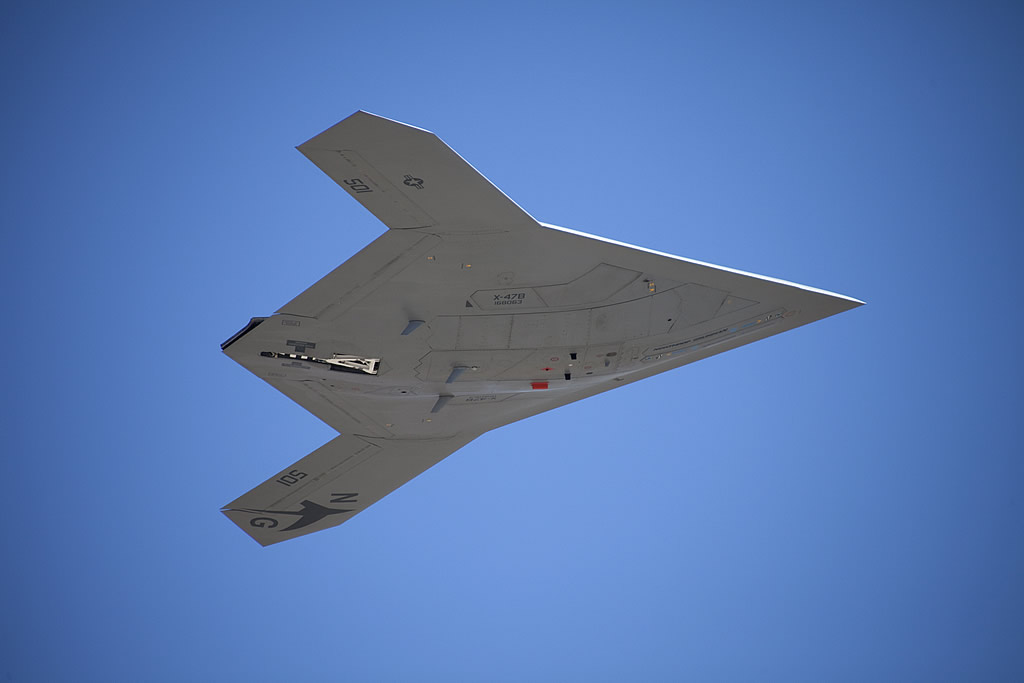FLIGHT OF THE DRONES
Anwar al-Awlaki and several of his al-Qaeda colleagues stopped their pickup truck on a remote, dusty road deep inside Yemen’s interior. He can have had only a split second to realise what was about to happen. But the missile strike that killed al-Qaeda’s most effective propagandist was no real surprise. It was just the latest example of the way America’s armed Predator and Reaper drones are changing the terms of combat with the country’s enemies, leaving them able to run but with nowhere to hide.
American officers, with their passion for acronyms, prefer not to call the machine that killed al-Awlaki a drone. They have a point. In nature, drone bees are poor, useless things that produce no honey and have no sting. That hardly describes the remotely-piloted Predator MQ-1 or Reaper MQ-9 aircraft. Laden with sophisticated sensors and carrying Hellfire missiles and laser-guided bombs, they patrol the skies above Afghanistan, launch lethally accurate strikes against terrorists in the tribal areas of Pakistan, Yemen and Somalia and have helped NATO turn the tide against Muammar Qaddafi’s forces in Libya. Even calling them Unmanned Aerial Vehicles (UAVs) or Unmanned Aerial Systems (UAS) is slightly misleading. There may not be a man in the cockpit, but each Reaper, a bigger, deadlier version of the Predator, requires more than 180 people to keep it flying. A pilot is always at the controls (albeit from a base that might be 7,500 miles, or 12,000km, away); and another officer operates its sensors and cameras.
Over the past decade UAS have become the counter-terrorism weapon of choice. Since 2005 there has been a 1,200% increase in combat air patrols by UAVs. Hardly a month passes without claims that another al-Qaeda or Taliban leader has been taken out by drone-launched missiles. There are now more hours flown by America’s UAS than by its manned strike aircraft and more pilots are being trained to fly them than their manned equivalents. While taking a knife to other cherished defence programmes last year, the defence secretary, Robert Gates, went out of his way to exempt drones from future cuts.

Under Barack Obama, the frequency of drone strikes on terrorists in Pakistan’s tribal areas has risen tenfold, from one every 40 days during George Bush’s presidency to one every four. John Brennan, Mr Obama’s counter-terrorism chief, has made it clear that as America draws down its forces in Afghanistan over the next three years, there will be no let up in drone strikes, which, he claims, are partly responsible for al-Qaeda being “on the ropes”. The grim Reaper’s ability to loiter for up to 24 hours, minutely observe human activity from five miles above while transmitting “full motion video” to its controllers and strike with pinpoint accuracy has made it the essential weapon in America’s “long war”.But does this mean that the future belongs to UAS? As military thoughts turn to the threat posed by more powerful potential adversaries than jihadist militants—a fast-emerging China, say, or a nuclear-tipped Iran—will their enthusiasm for unmanned aircraft continue unabated? Or will having a pilot in the cockpit making life and death decisions remain the least risky option for the majority of missions, as proponents of the late and wildly over-budget F-35 Joint Strike Fighter, due to enter service in 2016, claim? If the answer favours the drones, then the world may be just at the beginning of a genuine revolution in warfare. It would be a revolution dominated, at least at the start, by America, which accounts for the overwhelming majority of UAS. Other countries, though, such as Britain and Italy, have also been quick to deploy armed drones and Israel, in particular, has a thriving UAS industry, using drones in a wide variety of roles.Drones come in many shapes and sizes. Although Predators and Reapers get most of the attention, they are only part of a large, diverse fleet of unmanned vehicles. What they have in common is that they offer a new dimension in intelligence, reconnaissance and surveillance—knowing where the enemy is and what he is doing.Some are big aircraft, such as the RQ-4A Global Hawk, a jet-engined, all-weather spy plane, equipped with advanced synthetic aperture radar, that costs more than an F-18 fighter, can survey 53,000 square miles of ground in a day and has flown from America to Australia without refuelling. Some are micro- or even (in the near future) nano-sized devices, which may imitate a bird or an insect, crawling inside a house or perching on a window ledge, to send back information. In between are a plethora of planes, ranging from hand-launched aircraft looking like big model aeroplanes designed to tell soldiers what is happening over the next hill to medium-size catapult-launched aircraft, such as the RQ-7B Shadow that has probably covered more ground and spotted more combat targets than any other drone.
Inside the hiveTwo years ago, the US Air Force published its thinking on UAS development, “Unmanned Aircraft Systems Flight Plan 2009-2047”. The most striking thing about this document was its vision of a networked family of UAS. Drones would be built around common airframes of differing size incorporating a modular, “open-architecture” approach so they could be as flexible as possible. The medium-sized successors to today’s Reaper would be able to do more things, from defending airspace against enemy intrusion to attacking enemy air defences—all tasks that the F-35 has been designed to undertake. The largest UAS would operate as airborne warning and control aircraft (AWACs), aerial refuelling tankers, strategic lift transports and long-range bombers. Controversially, the UAS Flight Plan assumes that the next generation of drones will have artificial intelligence giving them a high degree of operational autonomy including—if legal and ethical questions can be resolved—the ability to shoot to kill.

Some question whether artificial intelligence, which always seems just a few years away, will ever work well enough. But if the Air Force’s Flight Plan is right, it should be possible to overcome the technical problems. In 30 years it should be technically feasible to imbue drones with all the capabilities of manned aircraft as well as some extra powers of their own.But just because something is possible does not necessarily make it desirable. When UAS first emerged, the accepted wisdom was that they would be most useful doing tasks deemed “dull, dirty, dangerous, difficult or different”.Included in the “dull” and the “difficult” categories were surveillance missions requiring time and a degree of persistence that crews of manned aircraft could not provide. By maintaining what a former director of the Central Intelligence Agency described as an “unblinking stare” over a target for 18 hours the pilot (or pilots in shifts) can monitor patterns of activity on the ground and choose the best moment to fire missiles.
A typical “dirty” task for a UAS would be flying in to observe or take samples after a chemical or biological attack. Missions too dangerous for manned aircraft include everything from probing enemy air defences to carrying out surveillance over territory where a shot-down pilot could be used as a hostage. In the “different” category is the multitude of tactical reconnaissance missions that small drones can carry out which would be beyond the scope of manned aircraft.Along with persistence, UAS have other potential advantages over manned aircraft. Because they provide more detailed information about targets, their strikes are usually more accurate and cause fewer civilian casualties (the idea that drones are constantly blowing up Afghan weddings is wrong). They can be cheaper because, without the systems and space needed to keep aircrews safe, they are smaller. This is certainly true of the kind of UAS operated by the army to improve situational awareness, although there is a trend towards bigger, costlier aircraft. By freeing up space for fuel and by dispensing with a human crew subject to fatigue, UAS can also fly for much longer than conventional aircraft. For counter-insurgency or anti-terrorism missions, drones are easier to use discretely than manned aircraft because most of the team required to support them is far from the conflict zone. Nor do UAS have to be rotated in and out of a war zone like manned aircraft. Training UAS controllers, even those with no previous flying experience, costs less than a tenth as much as turning out a fast-jet pilot.As China and other countries develop more accurate ballistic and cruise missiles, able to hit moving targets 1,000 miles away, America and its allies have become worried about the aircraft-carriers they have relied upon as a principal means of projecting power since 1945.
Those worries are not much helped by the carrier version of the F-35 which, without external fuel tanks, has a combat radius of only 680 miles. The US Navy’s response has been to propose what it calls the Unmanned Carrier-Launched Airborne Surveillance and Strike aircraft. It has already asked for financing and hopes—somewhat optimistically—that it will enter service by 2018. If a big, long-range UAS can operate safely from a congested carrier flight deck at sea, that would go some way to allaying fears for the future of aircraft-carriers.Another potential advantage for UAS is that future designs may be better able to survive in contested airspace than manned aircraft are. Without the need to accommodate crew, drones can be given strange radar-cheating stealthy shapes. They may also acquire “hyper-manoeuvrability”. Composite materials and advances in avionics allow the latest aircraft designs to pull g-forces, especially extreme lateral acceleration, that would be too much for a pilot to stand.Not all the arguments favour UAS, though. Advocates of continuing investment in manned aircraft point out that current drones depend on two-way satellite communications. If the datalink is broken the remote pilot will lose direct control of the aircraft, which then has to rely on pre-loaded software and GPS guidance. For routine missions that may be all right, but for missions requiring constant oversight, the vulnerability to electronic jamming or a direct attack on a communications satellite is an Achilles heel. Datalinks can also go down without help from an enemy.A related problem afflicting today’s drones is the slight delay between the remote pilot sending an instruction to the aircraft and its response (known as latency).
In contrast, a pilot in the cockpit can react instantly to a threat and take evasive action. Drones operating over Iraq, Afghanistan, Yemen and Somalia are fairly safe: the enemy is powerless to hurt them. But when Predators were first introduced in Bosnia, there was high rate of attrition because the Serbs had a large number of Soviet-era surface-to-air-missiles.Another problem is that UAS have not been cleared to share civil airspace over America and Europe by air-traffic controllers. The Federal Aviation Authority began trials in 2010, but it will not be easy to dispel fears that if a pilot were temporarily to lose control of a UAS, it might smash into a passenger airliner in shared airspace.There are fixes for most of these weaknesses. To reduce latency, small, solar- or laser-powered ultra-long-endurance drones can form a chain in the sky along which satellite signals can be bounced. But real resilience—and with it the huge growth in what drones could possibly do—would require UAS to work with a lot more autonomy from their human operators. And that is controversial.To reduce the workload on pilots, big UAS can already take off and land automatically. They can fly unaided to the target area and monitor much of what is happening on the ground without help from their controllers. At present, each drone has its own pilot. But the US Air Force plans to have a single pilot operating up to four drones at a time. And the aim is to go much further, with largely autonomous UAS programmed to make mission-critical decisions when flying in swarms to overwhelm enemy air defences. It may even be possible, according to military visionaries, to give drones a form of ethical reasoning, using artificial intelligence.
Civil-liberty advocacy groups have raised concerns about targeted killings by drones of suspected terrorists, especially in the case of al-Awlaki who was an American citizen. But so far, the use of drones has not fundamentally challenged the Geneva Convention-based Law of Armed Conflict. This requires that before an attack, any weapons system (whether manned or unmanned) must be able to verify that targets are legitimate military ones, take all reasonable precautions to minimise civilian harm and avoid disproportionate collateral damage.As long as a UAS pilot can trust the data from remote sensors and networked information, he or she should be able to make a proper assessment based on the rules of engagement in the same way as the pilot of a manned aircraft. Indeed, because of the unique characteristics of UAS, he may be in a better position to do so. He should have more time to assess the situation accurately, will not be exhausted by the physical battering of flying a jet and will be less affected by the adrenalin rush of combat.
Automatic enemy deletion in progressBut what about the next step? Does it follow that an unmanned aircraft should be allowed to fire a weapon based entirely on its own data analysis?The British Ministry of Defence suggests the answer is: perhaps. In a thoughtful document on the British approach to UAS earlier this year, the ministry’s Development, Concepts and Doctrine Centre argued that if the controlling system addressed the principles of the law on armed conflicts (military necessity, humanity, proportionality and the ability to distinguish between military targets and civilians) and if the rules of engagement were satisfied, then an armed strike would meet legal norms. However, it goes on to say that the software testing and certification of such a system would be expensive and difficult. And decisions about what is proportionate often require fine distinctions and sophisticated judgment. The authors conclude: “As technology matures and new capabilities appear, policymakers will need to be aware of the potential legal issues and take advice at a very early stage of any new system’s procurement cycle.”David Deptula, a retired general who was until recently in charge of the US Air Force’s intelligence and surveillance operations agrees. He recently told Jane’s Defence Weekly: “Technologically, we can take [autonomy] pretty far, but it won’t be technology that is the limiting factor, it will be policy.” The Air Force’s chief scientist, Mark Maybury, points out that there will be an almost infinite combination of contingencies facing drones. Designing systems that ensure they respond in a safe and effective way may take a decade or more. Evangelists for drones concur that even when there is no longer “a man in the loop” piloting a UAS directly, it will still probably be necessary to have humans “on the loop” monitoring and intervening.The ethical problems do not end there. There may be nothing in the laws of war saying combatants must be willing to put themselves in harm’s way, but some find creepy the idea of a UAS pilot stationed in Nevada driving home for supper with the family a few hours after surgically killing dozens of people in Pakistan. The peculiar detachment of drone warfare has given people close to the receiving end of drone attacks some success in depicting America’s use of them as the cowardly action of a bully sheltering behind superior technology. Looking farther ahead, there are fears that UAS and other robotised killing machines will so lower the political threshold for fighting that an essential element of restraint will be removed. Robert E. Lee said “it is well that war is so terrible, otherwise we would grow too fond of it.” Drones might make leaders fonder of war.More mundane obstacles may also slow the rise of UAS. Peter Singer, director of the 21st Century Defence Initiative at the Brookings Institution, a think-tank in Washington, DC, says that at a time of falling defence spending, UAS procurement and development may lack allies against powerful and conservative constituencies. These include sceptical military bureaucrats, fast-jet pilots, and members of Congress fighting to preserve traditional weapons programmes and the jobs that go with them. But as Mr Singer concluded in a recent article in the Armed Forces Journal: “Tough budgetary environments, first generation limits and reliance on the ‘proven’ are often crucial barriers to change, but history also shows they can’t prevent the future from happening.” Two years ago, Mr Gates conceded that the F-35 would probably be the last manned strike fighter. It may take longer than the visionaries think, but the pilot in the cockpit is already an endangered species.

EITAN-HERON TP
RQ-4A GLOBAL HAWK
MQ-9 REAPER
MQ-1B PREDATOR
X47-B
RQ-7B SHADOW























